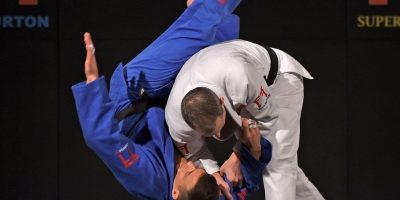What do you know about judo, one of the world’s oldest grappling martial arts? The family of Japan’s diverse set of martial arts is only around half a millennium old, all borne out of the ancient discipline Takenouchi-Ryu, the forerunner of jujutsu. Jujutsu and its tenets would eventually develop into a separate martial art, judo.
During the next few hundred years that followed the birth of Takenouchi-Ryu, the countless samurai who made it part of their training to study many different martial arts developed various forms of jujitsu, two of which were Kito-Ryu and Tenjin Shinyo-Ryu, and both were important in the eventual development of judo. After the American Commodore Perry visited Japan and ended up inadvertently changing its cultural landscape — eventually bringing about the downfall of the samurai class in the empire — jujutsu fell into a decline. People stopped practicing jujutsu and schools started closing.
Dr. Jigoro Kano ensured jujutsu’s survival during the Meiji Restoration, after developing a method of teaching the martial art as a sport. Kano, who would go on to refine judo, first studied Tenjin Shinyo-Ryu jujutsu, before eventually studying Kito-Ryu. Both forms of the martial art were considered soft, graceful, and harmonious; emphasizing more holistic elements. Ultimately, Kano wanted more from the disciplines he learned, and started studying all the forms systematically, taking what was best from each and synthesizing what he learned into one unified system.
Kano removed the striking techniques present in some of the forms of jujutsu he learned and retained the best grappling and throwing techniques. In 1882 Kano finished developing Kodokan judo — with its name (meaning the gentle way) implying heavily that the discipline has a focus on the softer techniques.
Kano established the first judo school, the Kodokan, in Tokyo. After its popularity spread in Japan, Kano and his students traveled the world and cultivated the presence of the martial art abroad. In 1909, judo underwent a revamp in its techniques, being “modernized” and made safer, while keeping Kano’s original Kodokan form as its foundation. In 1911, it was included in Japanese schools, and in 1920 it underwent further revision.
However, after years of being practiced as a safe sport, it would make a resurgence as a combat skill during World War II. It finally became an international Olympic sport at the 1964 Games. The sport underwent another major revision in 1982 by adding techniques that were previously removed, as well as 17 new methods, culminating in what is known as the “65 Techniques of Kodokan Judo.”
Today, in line with more modern combat sports, the teaching of judo is diversified through the addition of weight classes, as well as through instruction to children. This has ended up with judo truly becoming a global favorite — to the tune of tens of millions of practitioners from all ages and backgrounds. Meanwhile, students and scholars all over the world continue to make pilgrimages to the Kodokan to pay respects to the birthplace of their discipline, as well as advance their knowledge in the art.
Are you a judo practitioner? What else do you know about the history of judo?






